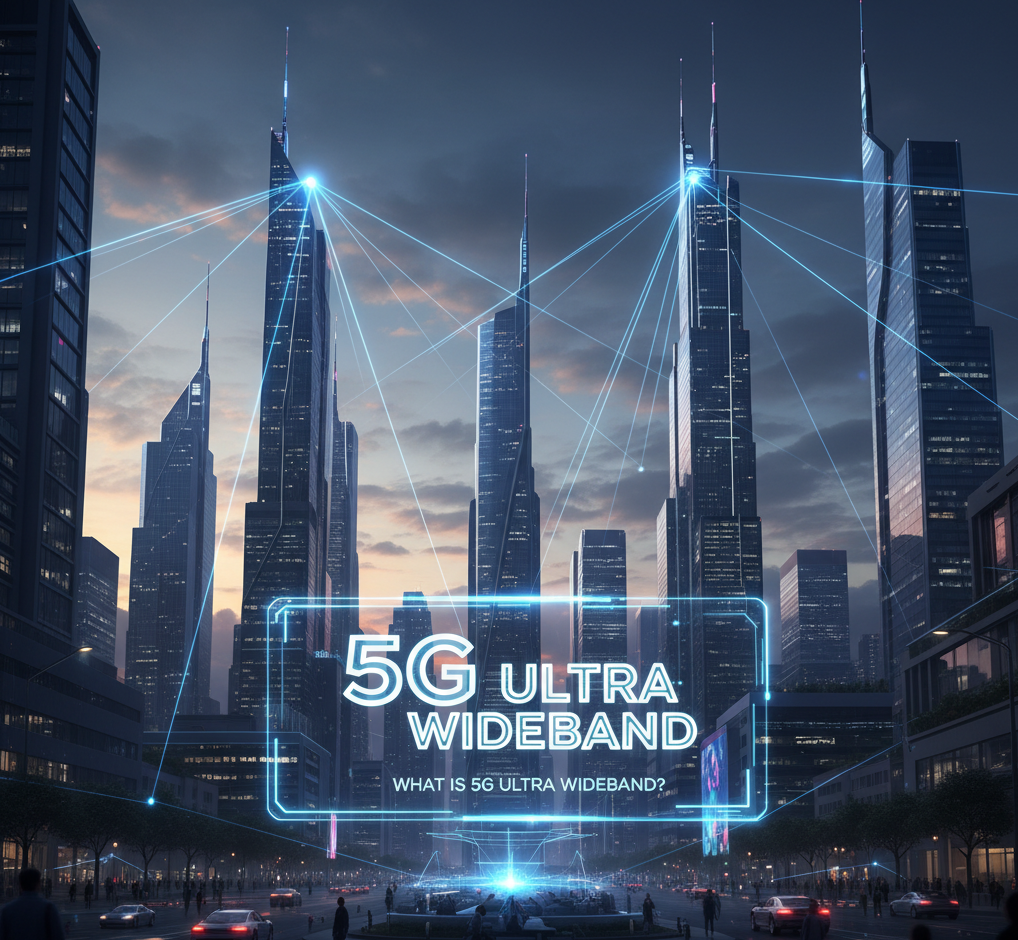The term “5G” is now common, representing the fifth generation of cellular technology, a significant leap beyond 4G LTE. However, within the 5G ecosystem in the United States, not all 5G is created equal. Mobile carriers use various frequency bands—low, mid, and high—to build out their networks, and this is where the premium offering, 5G Ultra Wideband (5G UW or 5G UWB), comes into play.
5G Ultra Wideband is the branding used by some major U.S. carriers, notably Verizon, to distinguish their fastest, most capable tier of 5G service. It represents the use of the higher-frequency spectrum—specifically mid-band (C-Band) and high-band (millimeter wave, or mmWave)—to deliver truly transformative speeds and performance. If you see the 5G Ultra Wideband icon on your compatible smartphone, you are accessing the elite tier of 5G connectivity.
The Spectrum Behind the Speed
To understand what is 5G Ultra Wideband, it’s essential to look at the radio frequencies it utilizes:
High-Band Spectrum (mmWave)
- The Ultimate in Speed: This spectrum operates on very high frequencies (typically above 24 GHz). It is the source of the blazing-fast, multi-gigabit speeds often associated with 5G, capable of downloading a full-length 4K movie in minutes or even seconds.
- Capacity for Crowds: mmWave offers massive capacity, making it perfect for handling dense user populations in concentrated areas like sports stadiums, concert venues, and busy downtown city blocks, where network congestion is usually a problem.
- The Trade-Off: The major limitation of mmWave is its short range and poor ability to penetrate physical obstacles like buildings, trees, and even heavy rain. This necessitates a dense deployment of small cell sites, meaning its coverage is spotty and localized to specific urban zones or venues.
Mid-Band Spectrum (C-Band)
- The Sweet Spot: Mid-band spectrum, particularly the C-Band (around 3.7 GHz to 4.2 GHz), strikes an ideal balance between speed and coverage. It delivers speeds significantly faster than 4G LTE and low-band 5G—often reaching hundreds of megabits per second—while offering a much wider geographic footprint than mmWave.
- Broadening the Power: The rollout of C-Band spectrum is critical for U.S. carriers, as it enables the expansion of the high-performance 5G Ultra Wideband experience from limited city pockets into broader metropolitan and suburban areas.

5G Ultra Wideband vs. Nationwide 5G
In the U.S., a common point of confusion is the difference between “Nationwide 5G” and 5G Ultra Wideband.
| Feature | Nationwide 5G | 5G Ultra Wideband |
| Spectrum Used | Primarily Low-Band (Sub-1 GHz) | Mid-Band (C-Band) and High-Band (mmWave) |
| Speed | Marginally faster than 4G LTE, often comparable | Significantly faster, reaching multi-gigabit speeds (mmWave) or hundreds of Mbps (C-Band) |
| Coverage | Wide and expansive, covering vast geographic areas, including rural regions | Denser and more localized, focused on urban cores, major suburbs, and specific venues |
| Latency | Moderate (similar to advanced 4G) | Ultra-Low (essential for real-time applications) |
Nationwide 5G provides a wide coverage layer, offering incremental improvements over 4G. In contrast, 5G Ultra Wideband is the speed and performance powerhouse, unlocking the true potential of 5G technology in areas where it is deployed.
Transformative Applications and Benefits
The unique combination of ultra-fast speeds and ultra-low latency offered by 5G Ultra Wideband is not just about faster downloads; it enables a new generation of applications and services for the American consumer and enterprise:
- Immersive Media and Gaming: Near-zero lag times support console-quality mobile gaming and seamless, high-definition streaming of 4K and 8K video, even in crowded public spaces.
- Augmented and Virtual Reality (AR/VR): The high bandwidth and low latency are essential for realistic, real-time augmented and virtual reality experiences, from remote collaboration to immersive educational platforms.
- Fixed Wireless Access (FWA): 5G Ultra Wideband serves as a competitive wireless alternative to traditional cable and fiber home internet, delivering multi-hundred Mbps or even gigabit speeds to homes and businesses without the need for new physical wires.
- Smart Cities and IoT: The network’s immense capacity can support thousands of connected devices, driving the development of smart city initiatives, including connected infrastructure, intelligent traffic management, and advanced public safety systems.
- Business and Enterprise: Businesses benefit from faster uploads for cloud backups, real-time data processing, and enabling advanced industrial automation and robotics in manufacturing and logistics.
Availability and the Path Forward
The rollout of 5G Ultra Wideband across the United States is an ongoing effort that requires significant investment in new infrastructure, including fiber backbone and small cell deployment. While the experience is already available in thousands of cities and major public spaces, its coverage is continually expanding as carriers deploy more of the newly acquired C-Band spectrum.
conclusion
For American consumers, accessing the benefits of 5G Ultra Wideband requires a 5G-enabled device that supports the necessary mid-band and mmWave frequencies, along with a qualifying mobile plan. As this powerful technology matures, it promises to redefine connectivity, enabling innovations that were once considered the realm of science fiction. The widespread availability of 5G Ultra Wideband is set to be a key driver of technological progress and economic growth across the nation.